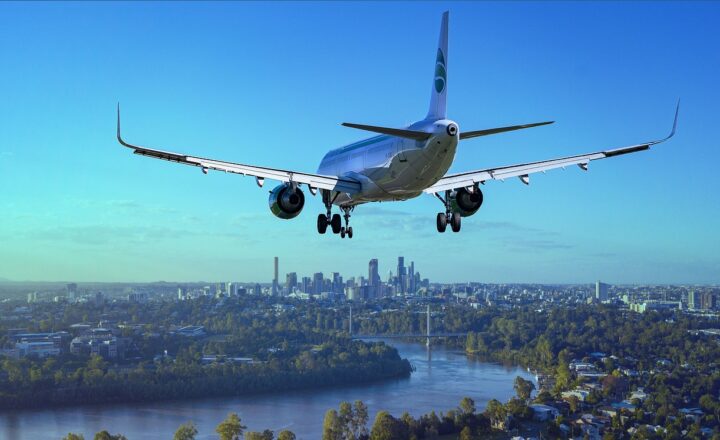From Propellers to Jet Engines: The Evolution of Airplane Technology Explained
November 11, 2024

The evolution of airplane technology is a remarkable journey that reflects human ingenuity and innovation over the past century. From the simplicity of wooden propellers to advanced jet engines that propel aircraft at supersonic speeds, this article delves into the pivotal advancements that have transformed aviation as we know it today.
1. The Birth of Aviation: A Humble Beginning
The story of airplane technology dates back to the early 20th century. The Wright brothers, Orville and Wilbur, made history on December 17, 1903, with their powered flight in Kitty Hawk, North Carolina. Their aircraft, the Wright Flyer, was a simple biplane powered by a 12-horsepower engine that drove two wooden propellers. This groundbreaking achievement marked the beginning of powered flight and laid the foundation for future advancements in aviation technology.
Key Elements of Early Airplane Design:
- Wooden Frames: Early aircraft were constructed using lightweight wood to minimize weight, which was critical for flight.
- Gliders to Powered Flight: The transition from gliding to powered flight was achieved by creating engines that could provide sufficient thrust for sustained flight.
- Basic Control Systems: Pilots used a system of control wires and pulleys to manipulate the wings and tail, allowing for ascension, descension, and turning maneuvers.
This initial phase of aviation relied heavily on experimentation and trial and error, leading to gradual improvements in aerodynamics and control.
2. The Rise of the Propeller Engine
Following the Wright brothers’ success, aviation technology evolved rapidly during World War I and the subsequent years. The introduction of the propeller engine became the hallmark of early aviation advancement.
The Benefits and Challenges of Propeller Engines:
- Increased Thrust: Propeller engines allowed for more powerful thrust generation, enabling aircraft to carry heavier loads and travel further distances.
- Reliability: Engine designs became more sophisticated, leading to greater reliability and less frequent mechanical failures.
- Speed Limitations: Despite advancements, propeller-driven aircraft faced limitations concerning speed and operating altitude due to aerodynamic drag and engine performance constraints.
Aircraft such as the Sopwith Camel and the Fokker Dr.I exemplified the dominance of propeller technology in the early 20th century. However, the need for higher speeds, longer ranges, and increased efficiency started to emerge as a pressing issue in aviation development.
3. The Advent of Jet Engines
The introduction of jet engines in the 1930s represented a significant turning point in aviation technology. Frank Whittle, a British engineer, and Hans von Ohain, a German engineer, independently developed turbojet engines that would redefine air travel.
Characteristics of Jet Engines:
- Increased Speed: Jet engines can achieve speeds well beyond that of conventional propeller-driven aircraft, allowing for faster travel times across great distances.
- Higher Operational Altitudes: Jet engines operate efficiently at higher altitudes, which reduces air resistance and enhances fuel efficiency, further allowing for faster long-distance travel.
- Advancements in Aerodynamics: The design of jet engine airplanes allowed for sleeker shapes, reducing drag and optimizing flight capabilities.
The first commercial jet airliner, the de Havilland Comet, made its debut in the post-World War II era, ushering in the age of commercial jet travel that we know today.
4. The Technological Innovations Behind Jet Engines
The evolution of jet technology has continued to advance through the decades, leading to more efficient, powerful, and environmentally friendly engines.
Innovations in Jet Engine Technology:
- Turbofan Engines: A major advancement in jet technology was the development of turbofan engines, which significantly improve fuel efficiency while maintaining thrust, making them the engine of choice for modern commercial airliners.
- Noise Reduction Technology: Modern engines are equipped with advanced noise reduction systems, reducing noise pollution and meeting strict regulations for urban flight paths.
- Sustainable Aviation Fuels (SAF): With growing concerns about climate change, the aviation industry is increasingly investing in sustainable fuel alternatives to decrease carbon footprints and lessen environmental impacts.
Innovations like these have led to an era of much quieter and more efficient flights, proving crucial to meeting the demands of a growing global air traffic market.
5. The Future of Airplane Technology
As the aviation industry looks to the future, several emerging technologies promise to shape the next generation of airplanes.
Potential Future Innovations:
- Electric Propulsion: The shift towards electric-based engines offers the potential for zero-emissions travel, reducing dependency on fossil fuels and minimizing environmental impacts.
- Urban Air Mobility: The development of vertical takeoff and landing (VTOL) aircraft could revolutionize urban transportation, reducing congestion and enabling rapid transit within cities.
- Advanced Automation: Enhanced automation systems, including artificial intelligence, could improve flight safety, optimize routing, and reduce pilot workload through autonomous flight systems.
The aviation industry is on the brink of a new era where technology may redefine how we view air travel. The pursuit of innovation continues to drive advancements that enhance safety, efficiency, and sustainability.
Conclusion
The evolution from propellers to jet engines illustrates the profound transformation of airplane technology over the last century. As engineering challenges have been met with creativity and innovation, the future of aviation remains bright, promising unprecedented advancements that will change our travel experiences for generations to come. Continuously adapting to societal needs, environmental concerns, and technological advancements, the industry stands poised for remarkable developments in the years ahead.








